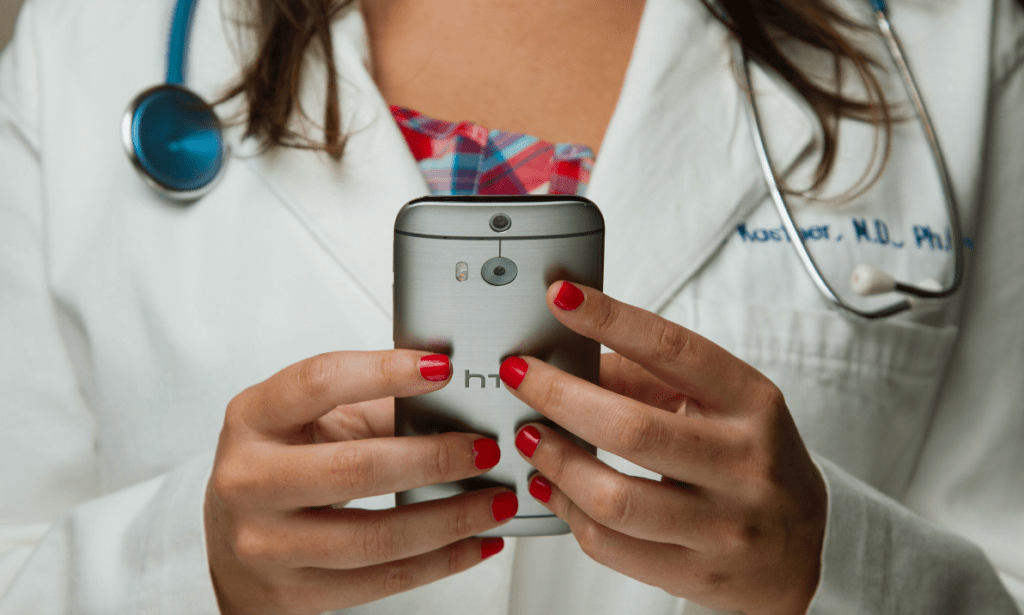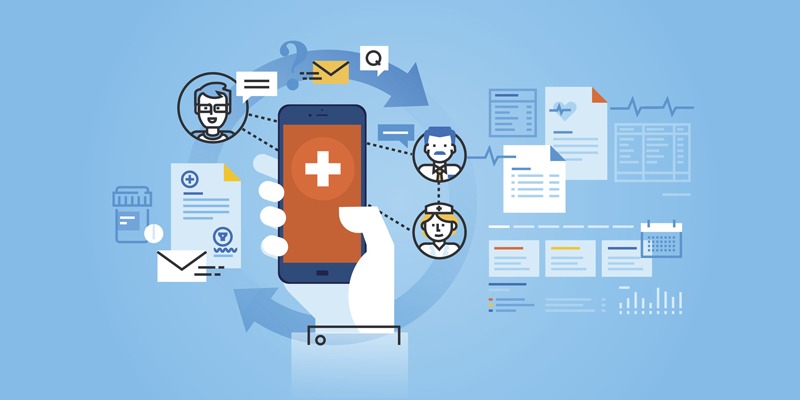mHealth is a new field of study that focuses on the use of mobile technologies to improve health and wellness. It can be used for both medical and non-medical purposes, which means it’s not always about your physical wellbeing. mHealth is a growing industry with more than 3 billion people worldwide now owning some form of smartphone or tablet computer, according to The World Bank. This blog post discusses how mHealth has changed the way we live, work, learn, travel and play!
You will learn:
- What does mHealth mean?
- What is included in mHealth?
- What is the purpose of mHealth?
- What are common examples of mHealth?
- How is mHealth different from eHealth?
Let’s jump right in!
What does mHealth (mobile health) mean?
mHealth (mobile health) is a general term for mobile phones and other mobile devices in medical care. The most common application of mHealth is to train consumers about preventive healthcare services. Such health technology is also employed for the control of diseases, for treating the conditions of epidemic outbreaks monitoring and chronic disease management. Non-profit organisations like mHealth Alliance advocate for the increased use of mHealth in the developing countries especially in third-world states like Chad and South Sudan.
What is included in mHealth?
Remote patient monitoring
mHealth software can be used to monitor a patient’s vital signs on their/their doctor’s smartphone remotely.
Appointment scheduling
With apps like Booksy, physio- and psychotherapy visits can be scheduled in no time.
Helpline for patients
Mobile health apps often have a dedicated phone line for counselling, advice, and a range of medical services. This helps patients get in touch with professionals as quickly as possible. At times, it’s difficult to contact healthcare workers; there even exist websites that provide a guide for contacting medical centres.
Support for healthcare workers
Plenty of healthcare mobile technology includes a dedicated phone line for healthcare workers to discuss their cases and share information.
Potential epidemic tracking
mHealth applications can be used to track the spread of communicable diseases and how many people are being affected.
Disease management for patients
Digital health is used to manage diseases such as diabetes.
What is the purpose of mHealth?
With the rise of the recent pandemic, mHealth has become a go-to method of disease prevention. According to the Centre for Disease Control and Prevention, mHealth can be used in four categories:
Prevention of disease outbreaks – Monitoring cases and distributing protective equipment such as masks or vaccines
Disease treatment – Through diagnosis using wireless technologies like ultrasound devices that send images for interpretation by specialists away from site
Supportive care – Providing medical instructions on mobile phones for example giving advice about proper use of oxygen supplies during emergencies
Post-event recovery support – For instance with aid organisations sending messages encouraging people to report their location after a disaster strikes so they are not left out without food or shelter.
What are common examples of mHealth?
Common examples of mHealth:
– GPS and other geospatial data is being combined with different mapping technologies such as Google Maps, that track the location of mobile phones. This can help medical professionals identify areas where diseases are spreading or emerging.
– Remote patient monitoring devices – Imagine a doctor who diagnoses an illness remotely through video chat, then prescribes medication for it without ever actually meeting his patients face-to-face. That’s what remote patient monitoring does! mHealth programs have many benefits including decreased costs (time spent driving), increased convenience (no need to leave home) and improved access to healthcare globally because you don’t need traveling far distances just for treatment which may not even exist in certain locations.
– mHealth is now being used for training consumers about preventive healthcare services and controlling diseases, like a doctor checking your vital statistics through an app on their phone in the comfort of your own home rather than having to go into a clinic.
– Providing health data – Doctors can now access their patients’ medical records remotely through mobile phones and tablets. This also allows patients to take a look at their own health data.
– Preventive care for drug and alcohol dependence – mHealth programs can help monitor and manage the disease.
mHealth also helps to monitor diabetes, heart diseases, autism, and people with insomnia or asthma. The Australian government is helping to lead the charge through the development of sites to advocate for diabetes management applications. According to researchers based in Washington the patient’s phone mic will work in an asthma monitoring app.
In Canada, the technology is designed for monitoring traction patterns in shoes and tracks and records foot and heel pressures. The device alerts diabetic patients putting too much pressure on their feet resulting in a heel problem. The possibilities for the use of mHealth apps as health professional support is also quite extensive. Setting up an appointment with a doctor is a breeze since you don’t have to spend hours waiting for somebody to pick up the phone.
How is mHealth used by patients?
Mobile health is changing how people live with their loved ones and their caregivers’ worlds through care. The user can use mHealth records individually to help themselves as well to their treatment team. Mobile health can save people’s time as they seek out health information and even diagnose minor conditions. Patients also use a mobile health record software that enables them to read and review medical history from afar within the confines of medical office facilities.
Some clinics now offer online appointments by allowing patients to go to a doctor or a nurse via secure chat with them. Some medical health apps even let healthcare providers monitor patients for critical signs such as the blood sugar condition or lung function.
mHealth applications also give patients more control over how much contact they want with their healthcare providers as well as what type of contact (for example, one-way video chats). The increased convenience provided by these apps means that many patients find themselves engaging in regular monitoring on things like weight loss progress or blood sugar levels – which may be difficult if not impossible without this technology!
The use of mHealth is a good option for people who live in remote areas with no access to medical care, because they can have more easy and convenient ways of receiving information about their health conditions. Furthermore, it has the potential to reduce costs in countries where mobile phone services are less expensive than traditional telephone lines.
How is mHealth different from eHealth?
eHealth is a much broader term and refers to online health or “electronic” health care – which can mean anything from doctors prescribing medicines remotely without you ever having seen them before, to nurses giving you advice over Skype when you’re off camping and end up getting bitten by bugs that cause malaria!
While it’s true that mobile phones are revolutionising how we live our lives today, mHealth only touches upon the subject of mobile devices and how they help with healthcare.
Potential economic benefits of mHealth
The IQVIA Institute estimates that mobile healthcare apps have saved the healthcare system around $7 billion per annum in the United States alone. Another potential economic benefit that is tricky to quantify is the impact on patients who could potentially pursue further preventative care.
If there’s a better way to reach out and talk to healthcare providers about a medical condition it seems obvious that the patient’s patience has decreased in order to get things checked.
If providers could tackle more complicated concerns in time, the need for more drastic and costly interventions would reduce. Its results show that a low need for such intervention is also possible.




